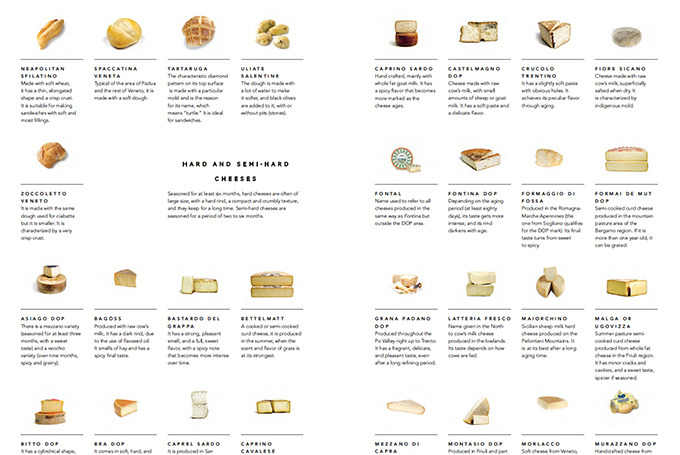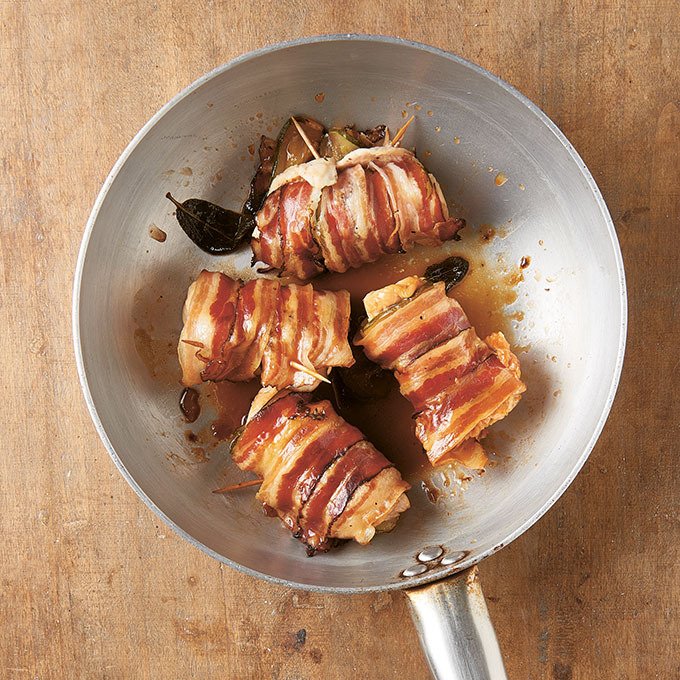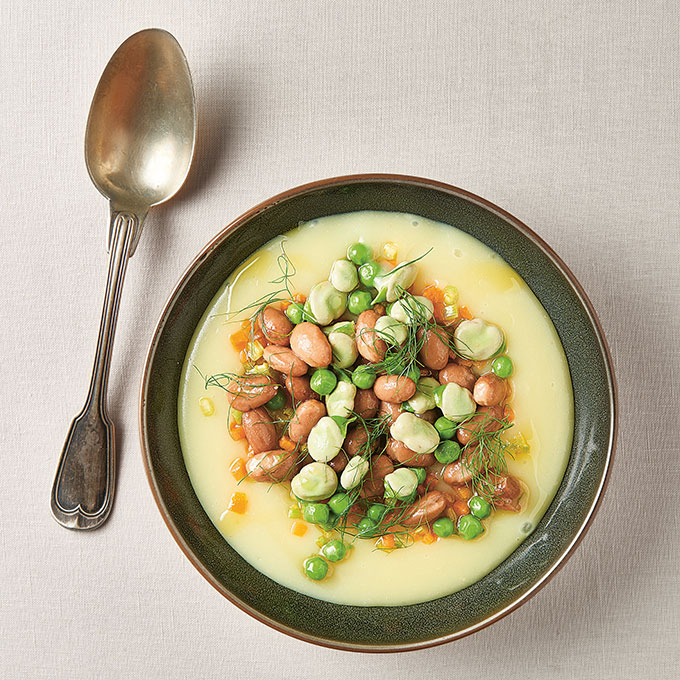All About Eataly's Newest Cookbook
Remember that scene in Big, when Tom Hanks is filled with childlike wonder as he prances along the floor piano in FAO Schwarz? Eataly's exactly like that—except you're full of wonder marveling at pasta, cheese and tiramisu.
Before Eataly became a worthwhile tourist attraction in New York, it was a first-of-its-kind store in, yes, Italy. Founded in 2007 by businessman Oscar Farinetti, this playground for Italian food lovers has since spread its red, green and white wings to locations around the world.
RELATED Rake Through the Leaves of These 36 New Cookbooks "
Finally, there's a new cookbook that allows you to make the mega store's modern yet comforting Italian cuisine at home with ease. Eataly is the latest in Phaidon's famously elegant line of cookbooks, but we're loving it for more than its simple aesthetic and inviting textured cover. Here's why we've got on our pasta bibs and are ready to mangia.
 Tagliatelle Pasta with Runner Beans and Shrimp
Tagliatelle Pasta with Runner Beans and Shrimp
① The Picture Glossary
This is arguably the most useful 40 pages ever published in a cookbook. It's a continuous spread of illustrations and descriptions for all varieties of produce, fish, and the ever-important cheese and bread categories. Tear out this section for your next trip to Italy, so you can wander the markets and play a real-life match game, scooping up Belmonte tomatoes while leaving Datterini behind. Also, think you know your rice? There are 34 types to learn here. Better start studying.
Glossary: Cheese
② A Wine Recommendation on Every Page
Yes, there's a bottle suggestion for every. single. dish. That's 300 recipes worth of wines to try. While it'll take a bit of research on your part to learn about the wine's qualities (the book provides only the bottle's name), sampling them all sounds like a worthwhile goal.
Pancetta, Chicken and Sausage Rolls
③ There Are No Headnotes
We love a lengthy, flowing intro now and then, but the quicker we get to twirl into bucatini all'amatriciana, the better. Each recipe gets down to business and skips the headnote that typically comes first. The recipes are simple enough that you won't need one, and instead, general explainers are peppered throughout the book. You'll find out, for example, the difference between Neapolitan and Roman pizza once and for all (hint: It has nothing to do with the thickness of the crust), and learn about helpful hacks, like how to make ice cream without a cumbersome machine.
Ginger Potato Soup with Bean Salad
④ Actually Useful Etiquette Tips
We're so often focused on what we're eating that it's easy to lose sight of how we eat it—especially when a specific cuisine is involved. Eataly aims to bring back that focus without condescending or tapping our knuckles with a yardstick in the process. Learn useful tips like how to properly set a cheese plate and what composes an antipasto course. If it's done as the book describes—"like a handshake, through which you understand the personality of the meal you are about to enjoy"—that sounds like something worth knowing.



